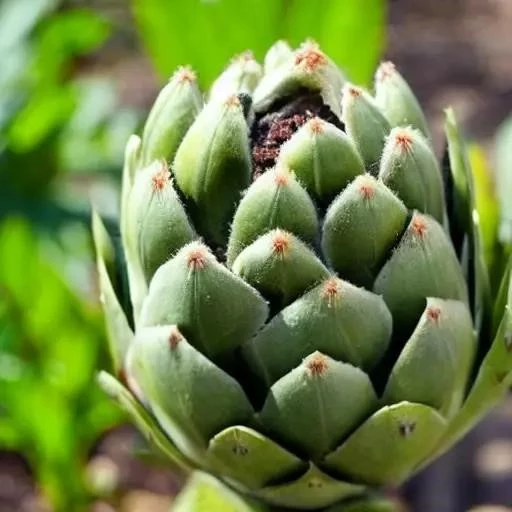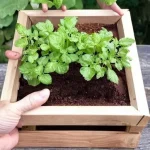Imagine biting into a perfectly steamed artichoke, its tender heart a testament to your green thumb, plucked fresh from your very own garden. For many home growers, the artichoke, with its formidable spiky exterior and regal presence, has long seemed an elusive prize, a delicacy best left to commercial farms or specialty markets. Yet, a burgeoning movement is empowering gardeners everywhere to cultivate these magnificent thistles, transforming their backyards into verdant landscapes yielding abundant, gourmet harvests. The dream of homegrown artichokes is not just attainable; it’s becoming remarkably accessible through a blend of time-tested wisdom and innovative techniques.
Cultivating artichokes, once considered a niche pursuit, is now experiencing a profound resurgence among gardening enthusiasts. This shift is driven by a renewed appreciation for sustainable living, the unparalleled flavor of fresh produce, and the sheer satisfaction derived from nurturing a plant from seedling to spectacular bloom. By integrating insights from seasoned horticulturists and adopting surprisingly simple yet incredibly effective strategies, you can embark on a journey towards a thriving artichoke patch. This isn’t merely about planting; it’s about understanding the intricate dance between soil, climate, and careful cultivation, unlocking the full potential of these botanical marvels.
| Artichoke Essential Fact | Key Information for Gardeners |
|---|---|
| Botanical Name | Cynara cardunculus var. scolymus |
| Family | Asteraceae (Daisy Family) |
| Native Region | Mediterranean Basin |
| Climate Preference | Mild winters (above 20°F/-6°C), cool, moist summers. Prefers zones 7-11. |
| Sunlight Requirement | Full sun (minimum 6-8 hours direct sunlight daily) |
| Soil Type | Rich, well-drained loam; slightly acidic to neutral pH (6.0-7.0) |
| Watering Needs | Consistent moisture, especially during bud development; avoid waterlogging. |
| Planting Time | Fall in mild climates, early spring in colder regions (after last frost). |
| Harvest Period | Late spring to early summer (first year); spring in subsequent years. |
Mastering the Foundation: Soil, Sun, and Strategic Planting
The journey to bounteous artichoke harvests commences with an unwavering focus on foundational elements. Artichokes are notoriously heavy feeders, thriving in incredibly rich, well-drained soil. Think of your soil as the pantry for these majestic plants; it needs to be generously stocked. Incorporating copious amounts of organic matter—compost, aged manure, or leaf mold—is not merely beneficial but absolutely crucial. This enriches the soil structure, improving drainage while simultaneously boosting nutrient retention, a dual benefit that is paramount for robust growth. Expert growers often recommend preparing beds months in advance, allowing amendments to properly integrate, creating an ideal environment.
Beyond soil, sunlight reigns supreme. Artichokes demand a minimum of six to eight hours of direct sunlight daily to produce those coveted, plump buds. Shady spots will yield stunted plants and disappointingly small harvests, if any at all. When considering planting, select a location that not only bathes in sun but also offers protection from strong winds, which can damage the large, sprawling leaves. For gardeners in colder climates, where traditional artichoke cultivation might seem daunting, varieties like ‘Imperial Star’ or ‘Green Globe’ can be grown as annuals, started indoors from seed and transplanted after the last frost, flowering within a single season. This adaptability empowers even those outside the traditional Mediterranean zones to enjoy fresh artichokes.
Nurturing Growth: Water, Nutrients, and Pest Vigilance
Once established, consistent care becomes the cornerstone of successful artichoke gardening. These plants are thirsty, especially during their active growth phase and as buds begin to form. Irregular watering can lead to tough, woody buds, drastically diminishing their culinary appeal. A deep, consistent watering schedule, ideally using drip irrigation to deliver moisture directly to the root zone, is remarkably effective. Avoiding overhead watering can also mitigate fungal issues, ensuring healthier foliage. As for nutrition, a balanced fertilizer applied every few weeks during the growing season, or a slow-release organic option, will fuel their vigorous development, producing the vibrant, succulent buds we all crave.
Even the most meticulously cared-for garden can encounter challenges, yet vigilance and proactive measures can avert disaster. Artichokes, while generally robust, can attract pests like aphids or snails. Rather than resorting to harsh chemicals, embrace an integrated pest management approach. Introducing beneficial insects, like ladybugs, can naturally control aphid populations, while hand-picking snails and slugs or using organic barriers proves incredibly effective. Recognizing early signs of distress, whether from pests or nutrient deficiencies, allows for swift intervention, safeguarding your anticipated bounty. This holistic approach not only protects your plants but also fosters a healthier, more sustainable garden ecosystem, contributing to the broader ecological balance.
The Thrill of the Harvest: Timing and Longevity
The moment of truth arrives when those magnificent buds begin to swell. Knowing precisely when to harvest is paramount to enjoying tender, flavorful artichokes. Buds should be firm, tightly closed, and still relatively small – typically 3 to 5 inches in diameter for prime eating. Waiting too long will result in the bracts opening, revealing the thistle flower, rendering the bud tough and less palatable. Using a sharp knife, cut the stem about an inch below the base of the bud, leaving enough stem for handling. Prompt harvesting encourages the plant to produce more buds, often smaller secondary ones, extending your season of enjoyment and maximizing your yield.
For those in suitable climates, artichokes are perennial powerhouses, gracing your garden with harvests for several years. After the main harvest, allow the plants to produce a few flowers, which are stunningly beautiful and attract pollinators, before cutting the stalks back to ground level. In colder regions, providing winter protection, such as a thick layer of mulch over the crowns, is essential for their survival. This thoughtful overwintering ensures that your investment in these extraordinary plants continues to pay dividends, season after season. Cultivating artichokes is more than just gardening; it’s an investment in sustainable living, culinary delight, and the profound satisfaction of connecting with the earth.
Your Artichoke Odyssey Awaits!
The journey from a humble seed or root division to a flourishing artichoke plant is an incredibly rewarding experience, offering both aesthetic beauty and gourmet delight. By embracing these comprehensive artichoke gardening tips, you’re not merely growing a vegetable; you’re cultivating a symbol of resilience and abundance. The optimistic future of home gardening is undoubtedly bright, with more individuals discovering the joy and profound satisfaction of producing their own food. So, roll up your sleeves, prepare your soil, and get ready to be astonished by the bounty your garden can yield. Your artichoke avalanche awaits, promising a future filled with fresh flavors and unparalleled gardening triumphs!






